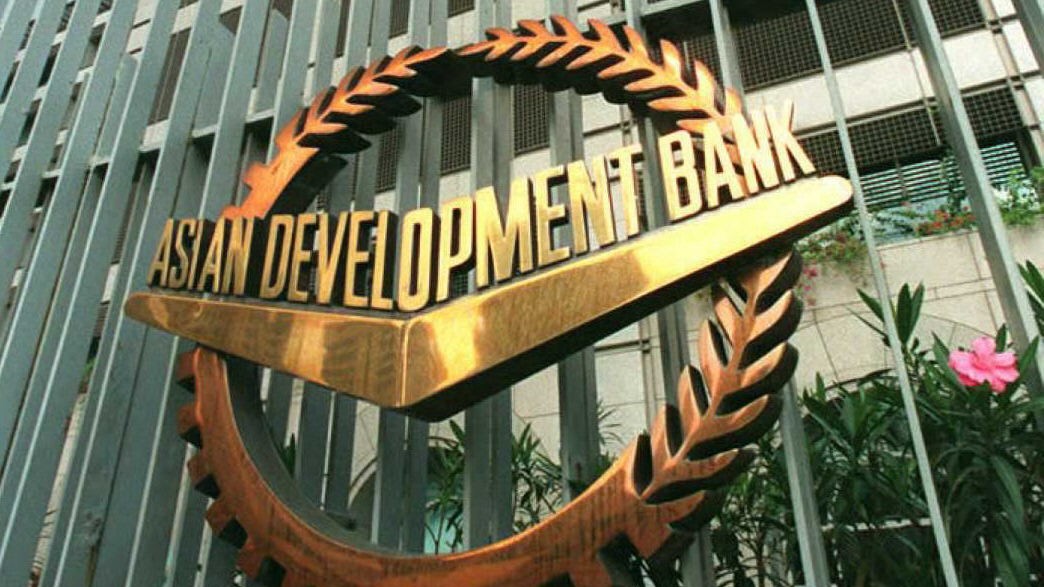
Asian Development Bank (ADB). AFP FILE PHOTO
NADI, Fiji — As the Philippines seeks more foreign financing from development partners such as China and Japan as well as multilateral lenders like the Asian Development Bank (ADB) and the World Bank, among others, to build more infrastructure, ADB’s top economist on Wednesday said “debt trap” should not be a “big concern” as long as borrowings are “sustainable.”
“You’re to meet a potential demand of an economy and eliminating infrastructure bottlenecks—if you’re such a government, I think having debt per se and also continuing public investment is not necessarily a bad idea,” ADB chief economist Yasuyuki Sawada told a press conference on the sidelines of the ADB’s 52nd Annual Meeting.
Sawada noted that the Philippine economy is currently being driven by government investment on public goods and services, including infrastructure.
Last year, the government spent a record P803.6 billion on infrastructure and other capital outlays, a 41-percent jump from P568.8 billion in 2017 and exceeding the P775.4-billion program for the year.
The Duterte administration is also rolling out the ambitious “Build, Build, Build” program, under which the government will disburse over P8 trillion to jumpstart 75 flagship infrastructure projects.
Of these “game-changing” projects under “Build, Build, Build,” one-third or 25 were expected to be completed by the time President Duterte ends his term in 2022.
According to a report of the state planning agency National Economic and Development Authority (Neda) as of February, loans and grants from development partners will finance the bulk of these “Build, Build, Build” projects—55 projects worth P1.97 trillion will be financed by official development assistance (ODA) from bilateral partners and multilateral lenders, accounting for 92.6 percent of the program’s total financing requirement.
The national budget will finance 11 projects worth P134.52 billion; public-private partnership (PPP), eight projects worth P71.89 billion; while a private venture will implement one project with a yet to be determined cost.
For Sawada, “I think as long as debt is sustainable, I think this is a very important government initiative we need to support.”
Sawada said tADB and the Washington-based International Monetary Fund (IMF) have frameworks on debt sustainability analysis with “well-defined, streamlined” processes, allowing scrutiny or close watch over possibility “questionable” loans.
The share of debt to gross domestic product (GDP) last year was 41.9 percent, and the Cabinet-level, interagency Development Budget Coordination Committee (DBCC) expects the debt-to-GDP ratio to stay at the same level this year.
While the government is seeking more foreign loans and grants for infrastructure, the bulk of the yearly budget is still being financed by local borrowings, mainly from the sale of treasury bills and bonds.
“The medium-term financing program will continuously favor domestic sources with a 75-25 split between domestic and external borrowings, to mitigate foreign exchange risks while contributing to the development of the domestic capital market,” such that “national government debt is projected to maintain its downward course to 38.8 percent of GDP by 2022, anchored on the government’s sustainable fiscal strategy and faster economic expansion,” the Department of Budget and Management (DBM) said in a recent report.
For its part, the Department of Finance (DOF) had maintained that the Philippines would not fall into a debt trap as the government has the capacity to pay its obligations.
“The government’s debt is carefully structured to ensure that it does not borrow without raising its own capital for infrastructure projects, while at the same time sourcing a significant portion of financing from the local debt market to minimize exposure to adverse external factors,” Finance Secretary and the ADB’s governor for the Philippines Carlos G. Dominguez III said last month.

